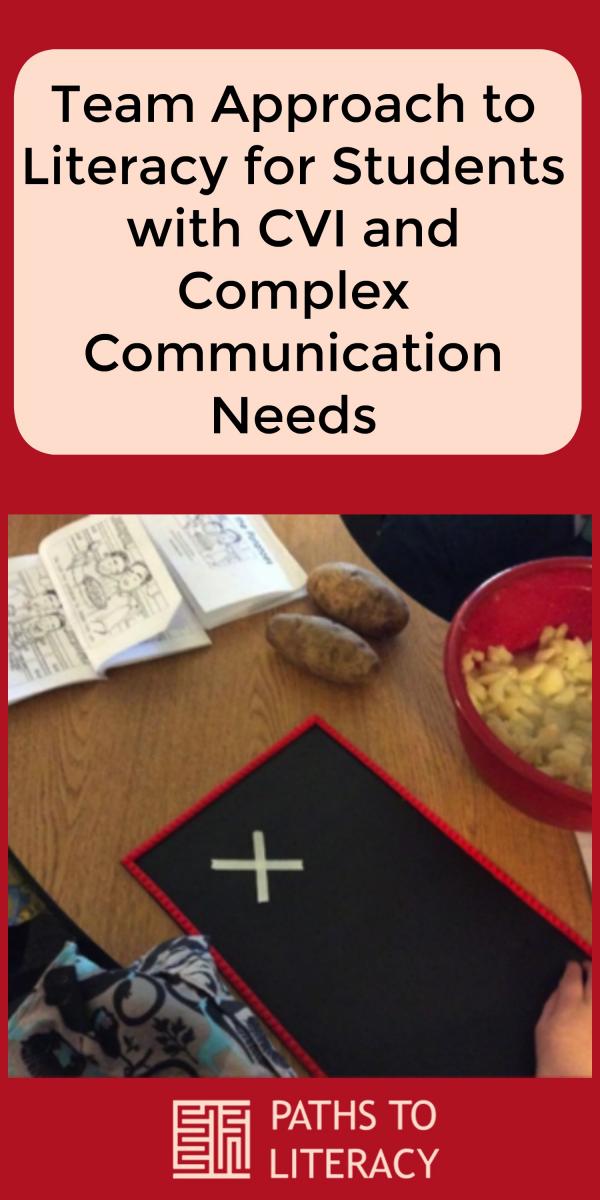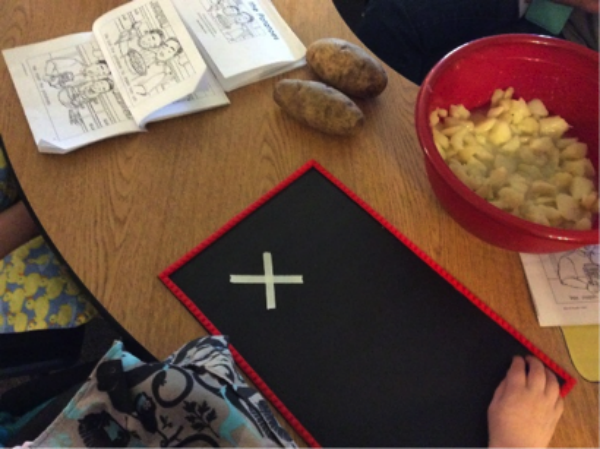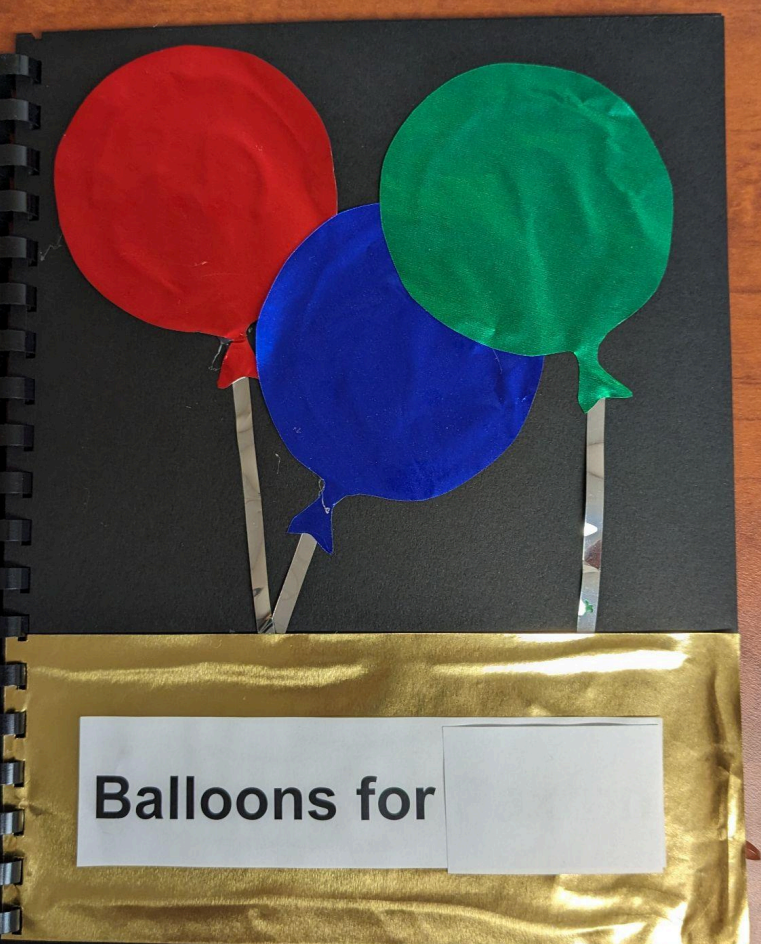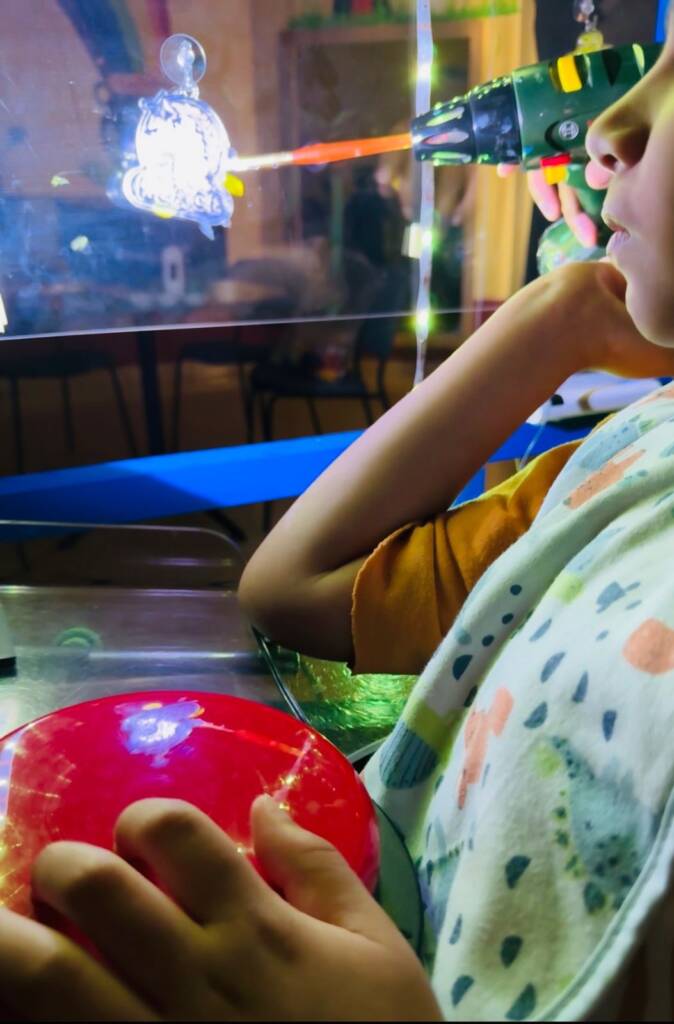How the Classroom Teacher, Speech Language Pathologist, and Teacher of Students with Visual Impairment came together to support one another and increase student engagement with a Reading Group
“It just seems like her days could be so much more productive.”
“She spends a lot of instruction time with her head down.”
“I can barely get her to stay awake.”
“I just feel like we could do better for her…….”
These were the weekly conversations shared by a highly structured moderate-severe special needs classroom teacher, Teacher of Students with Visual Impairments, and Speech Language Pathologist as we lamented the lack of engagement of a specific student. We were all frustrated with the effectiveness of her instruction, and wanted more for her, but struggled to pinpoint a quick and easy solution to our dilemma.
Collaborating through a Group Activity with Targeted Instruction
We brainstormed how we could work together more collaboratively to increase our students’ engagement. We decided to use a group activity as a vehicle for us to support each other’s goals through targeted instruction. We realized creating a daily Reading Group with these students (and their peers who have a variety of other areas of need) using real objects paired with a simple text would be a great place to start. This process allowed each of us to focus on the individual skills we wanted to address with the students in terms of vision, speech, and literacy, while working in a collaborative format.
Need for Meaningful Direct Experience
When brainstorming together, it became clear that the biggest obstacle our students were facing was a lack of schema compared to typically developing peers. They had no way to anchor the vocabulary in most texts presented to them, without meaningful experiences with which to connect the words. This led us to realize the opportunity (and responsibility) we have in providing and creating meaningful, direct experiences with objects within the text for these students. In the beginning, we decided to narrow our focus to 3 objects per text in an effort to identify the most important ideas while not overwhelming our students (and ourselves).
We are now able to expand to more objects and easily differentiate for individual students with this format. Some of our students use color print outs of the text, some view it as an ebook on their tablet, some use objects only presented with CVI supports, and some use copies with salient features highlighted. We use a black mat and light to support the needs of some of our students. Using these strategies and techniques provides a reading group that has led to much greater student engagement in addition to improvement in the academic, communication and functional vision skills each of us were looking for individually. Additionally, we have FUN sharing and learning together.
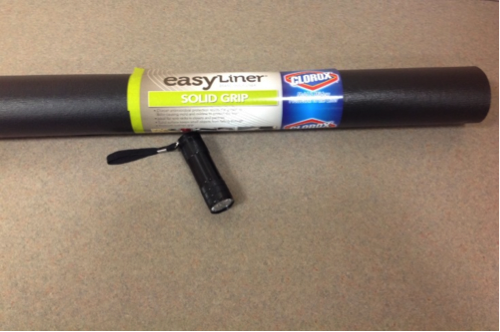
Selecting Objects
Objects are chosen based on their ability to represent a salient feature of the target vocabulary word. For example, a teddy bear is represented by an actual stuffed teddy with soft fur, to allow students to feel the soft fur and understand that means teddy bear. The target word “candy” is reinforced with a taste of candy in order to provide a gustatory connection for the student. A bat was represented with Halloween dress up teeth for the student to feel to understand that that the bat had sharp teeth. Items can be touched, smelled, tasted, heard or experienced in multiple ways in order to build the most rich understanding possible of a concept for our students.
Choosing Texts
The texts that are chosen typically coincide with holidays or seasons, current happenings in the school or community, concept development skills (big, little, up, down, colors, etc.) and activities of daily living. We try to use timely and relevant text in order to help the students build connections with vocabulary they are hearing in the regular education setting, community, and home. For example, in early to mid February, they will hear a lot about Valentine’s Day, flowers, and candy. One text in the spring time was about a baseball game. Helping them understand these concepts fosters their ability to connect to family and friends even outside the group.
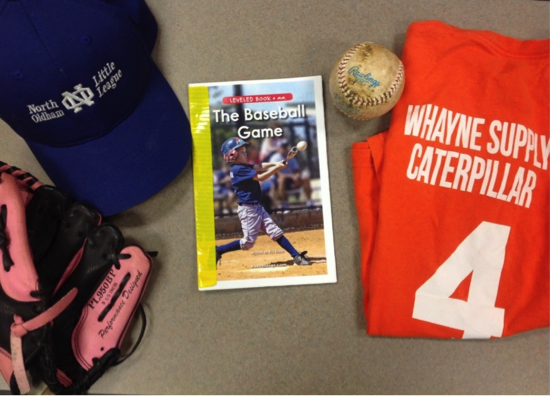
Reading A-Z
We have found Reading A-Z to be a wonderful resource for finding age appropriate texts that are simple, bold, and often have real photographs of real objects and people for “illustrations”, as we know interpreting drawn illustrations can often be difficult for children with CVI. We also use commercially available texts and adapt as needed for specific students, while still pairing with real objects to amplify connections and have found a multitude of ideas through the Paths to Literacy website.
The reading group meets daily for 30 minutes and follows a specific order of events that includes student jobs, goal setting for improved behaviors, a weekly poem, the shared reading of the text, visual and tactile exploration of the paired objects, and a time for self-reflection on the goals they set at the beginning. After the conclusion of the self-reflection, the students transition to a movement break activity, and then some individual work time.
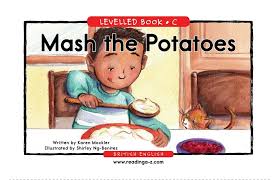
Sample Reading Group Books and Activities
Below are some pictures of texts and objects we have used during our Reading Group.
This book is called “Mash The Potatoes“. On Friday of each week there is an extension activity to each text. During the week, the objects (potato, potato masher and fork) were used to facilitate a connection to the text. On Friday we made (and tasted if able to) mashed potatoes, further reinforcing the concept.
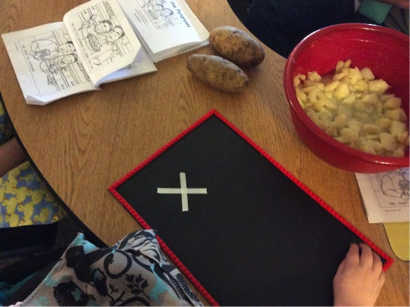
Below is a sample of some of the titles we have used in the past. As you can see, the texts are functional and easy to pair with real objects to create direct and meaningful experiences and extension activities to connect students with the text and deepen literacy skills:
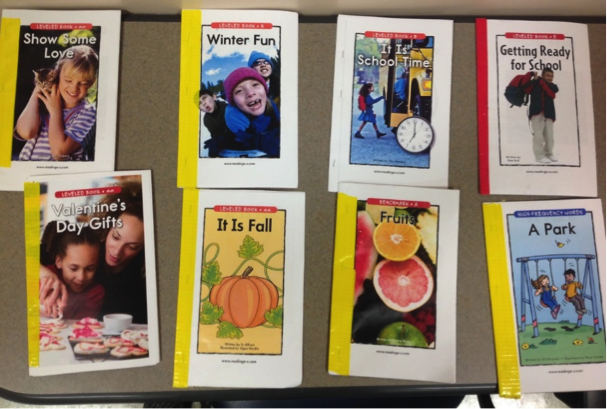
- Lunch at School
- My School Bus
- How to Make a Salad
- We Go Camping
- 1-1 Correspondence: One, Two….Twelve
- Colors: Blue, Orange…
- Positional Concepts (On, off, under…)
- The Backyard
- The Playground
- The Birthday Party
- Valentine’s Day Gifts
- My Classroom
- My Bath
- My Closet
- It is Fall, Spring
….and the list goes on and on.
Increased Student Engagement
By monitoring students’ response to the text by documenting signs of engagement, we were able to see an increase in average time of engagement of 64% when using objects. Anecdotally, we also noticed that after repeated exposures to the text, they began to anticipate the coming tactile experience as evidenced by lip smacking at the word “candy” before the object was presented, or crying and retracting hands at the word “rain” before the water was sprayed on the hands. Clearly, the students had learned what to expect in connection to these words, thus, they had learned the words! Moreover, the same terminology “Are you ready to read?” was used at the start of each group. After repeated exposures, the students began to vocalize and respond to this introductory phrase, demonstrating that they knew what was coming in reading group. They understood that they were readers!
Start a Reading Group of Your Own!
This group has been a game changer for the instructional practice for all three professionals involved. Our students at all levels are engaged and growing in their literacy skills. They are interacting with the books and with each other in powerful ways. The group has provided a natural environment in which to target social skills and self advocacy, passing objects, asking for turns, etc. The peers in the group who are able to read have grown leaps and bounds in their comprehension and decoding skills, as they build layers of understanding to their schema and concepts of vocabulary. The adults are motivated to support the students, and the time is interactive and fun for all. Multiple goals are easily targeted and documented. It is a win all the way around. Collaboration has brought this beautiful group from an idea to the most powerful 30 minutes of our instructional day. So, gather your team together and start a reading group of your own!
Reading A-Z https://www.readinga-z.com/
